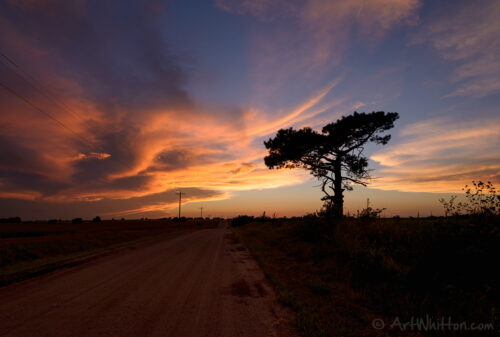Choosing The Right Location For Capturing A Stunning Sunset
Choosing the right location for capturing a stunning sunset requires careful consideration. Firstly, it’s important to find a spot with an unobstructed view of the horizon. Look for vantage points that offer an expansive outlook, such as beaches, hilltops, or rooftops. These locations provide a clear line of sight and allow the sun to fully immerse in the scenery. Additionally, consider incorporating interesting foreground elements into your composition.
This could be anything from silhouetted trees or buildings to rocks or water bodies. Including these elements in your frame not only adds depth but also creates a visually captivating contrast against the setting sun. Furthermore, pay attention to weather conditions and cloud formations when selecting your location. Clouds can add drama and texture to sunset photographs, enhancing their overall impact.
Understanding The Importance Of Timing In Sunset Photography
Capturing a stunning sunset photograph requires more than just pointing and shooting. One crucial aspect to master is the art of timing. The timing of your shot can make the difference between a mediocre image and a breathtaking masterpiece. Timing is essential because it determines the quality of light and colors present during a sunset. As the sun descends towards the horizon, it creates a magical atmosphere with vibrant hues, warm tones, and dramatic shadows.
The colors evolve rapidly, changing from soft pastels to intense oranges and reds before fading into twilight. To capture this ephemeral beauty, you must plan your shoot carefully. Arriving at least 30 minutes before sunset allows you to scout for locations, set up your equipment, and prepare for that perfect moment when nature’s canvas reaches its peak glory.
Preparing Your Camera Settings For Photographing A Sunset
Preparing your camera settings for photographing a sunset requires careful consideration to capture the mesmerizing beauty of this natural phenomenon. Begin by choosing the right shooting mode, such as aperture priority (A or Av) or manual mode (M), which provides greater control over settings. Adjusting the white balance to “Cloudy” or “Shade” can enhance the warm tones of the setting sun, while setting a lower ISO value, like 100-400, helps reduce noise and retain detail.
Next, select an appropriate aperture to control depth of field. Shooting with a smaller aperture (larger f-stop number) like f/11-f/16 can ensure that both foreground and background elements remain sharp. To capture vibrant colors and prevent overexposure, use exposure compensation techniques by slightly underexposing the image.
Composing Your Shot To Create An Engaging Sunset Photograph
Composing your shot to create an engaging sunset photograph is crucial in capturing the beauty and tranquility of this natural phenomenon. Begin by considering the foreground, which can add depth and interest to your image. Incorporate elements like rocks, trees, or silhouettes of people to create a sense of scale and perspective. Next, pay attention to the horizon line. Placing it lower in the frame can emphasize the vastness of the sky and create a more dramatic effect.
Conversely, positioning it higher can showcase interesting elements on the ground. Additionally, consider using leading lines such as roads or fences that guide the viewer’s eye towards the setting sun. This technique adds a sense of movement and draws attention to the focal point. Experiment with different angles and perspectives to find unique compositions that stand out from typical sunset photographs.
Utilizing Filters And Accessories To Enhance Your Sunset Images
Utilizing filters and accessories can greatly enhance the quality and impact of your sunset images. One essential filter to consider is the graduated neutral density (ND) filter. This filter helps balance the exposure between the bright sky and darker foreground, allowing you to capture both elements with greater detail and without overexposure. By positioning the dark portion of the filter over the sky, you can darken it, resulting in a more dramatic and vibrant image.
Additionally, polarizing filters are beneficial when photographing sunsets as they reduce glare and reflections on water or glass surfaces, intensifying colors and increasing contrast. They also help deepen blue skies, making them more striking against warm sunset hues. Other accessories that can be useful include a sturdy tripod to ensure sharpness in low-light conditions, a remote shutter release to minimize camera shake during long exposures, and a lens hood to prevent unwanted lens flare.
Capturing The Vibrant Colors And Dynamic Range Of A Sunset Through Exposure Techniques
Capturing the vibrant colors and dynamic range of a sunset through exposure techniques is essential for creating stunning sunset photographs. The key lies in understanding how to properly expose for the ever-changing light conditions during this magical time of day. To start, it’s important to consider shooting in manual mode, allowing you full control over your camera settings. Begin by metering the scene and adjusting your aperture accordingly to capture a wide range of colors.
A smaller aperture (higher f-stop number) will bring more details in the foreground and background into focus. Additionally, pay attention to your shutter speed. Slower speeds can create a dreamy effect by capturing the movement of clouds or water, while faster speeds freeze any action within the frame. Experimenting with different white balance settings is also crucial when photographing sunsets. By using a cooler white balance, you can emphasize the warm hues of oranges and reds in the sky.
Editing Your Sunset Photographs To Achieve The Desired Mood And Impact
Once you have captured stunning sunset photos, enhancing them through editing can take your images to the next level. Start by adjusting the exposure, contrast, and saturation to bring out the vibrant colors of the sky. Be careful not to overdo it; maintaining a natural look is crucial for sunset photography. Next, focus on enhancing the details in your image. Use sharpening tools selectively to emphasize the textures of clouds or silhouettes.
Adjusting highlights and shadows can also help bring out intricate details that may have been lost during shooting. Consider experimenting with different color tones and temperature adjustments during editing. Cool tones like blues and purples can create a serene atmosphere, while warm tones like oranges and yellows intensify the warmth of a sunset. Lastly, cropping your image can help improve composition or remove distracting elements from the frame.
NOTE: This post contains AI generated content.





